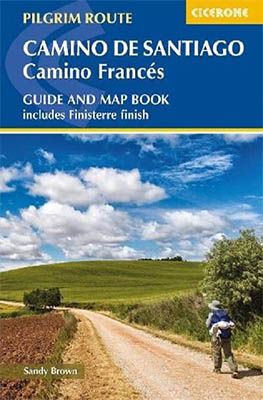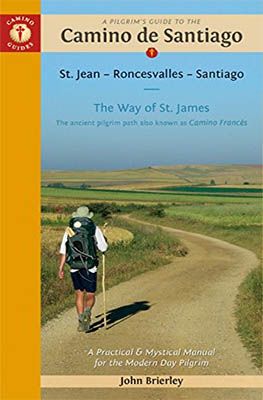In our earlier blog, we wrote about the highlights along the Camino Francés from its start at the French border to its arrival in Burgos. In part 2 of the blog, we will guide you along the many sights until the end point of the Camino Francés in Santiago de Compostela as along the Camino Francés you will encounter plenty of beautiful monuments and towns.
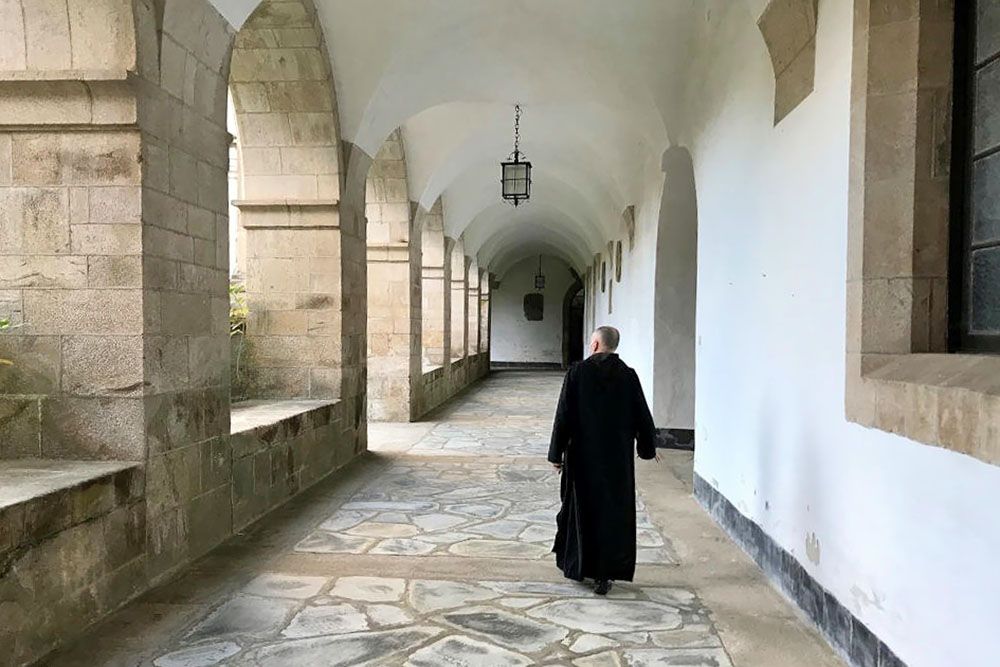
Highlights along the Camino Francés
The second part of the route also gives us the opportunity to get to know the beautiful Spanish culture in the various regions. Since along the way, you will encounter many highlights along the Camino Francés. We even sail a small part of the route, which is a special experience. We also pass the great city of León, ideal for a few days of just being a tourist with its many attractions. And, of course, impressive religious monuments lie along this Camino de Santiago.
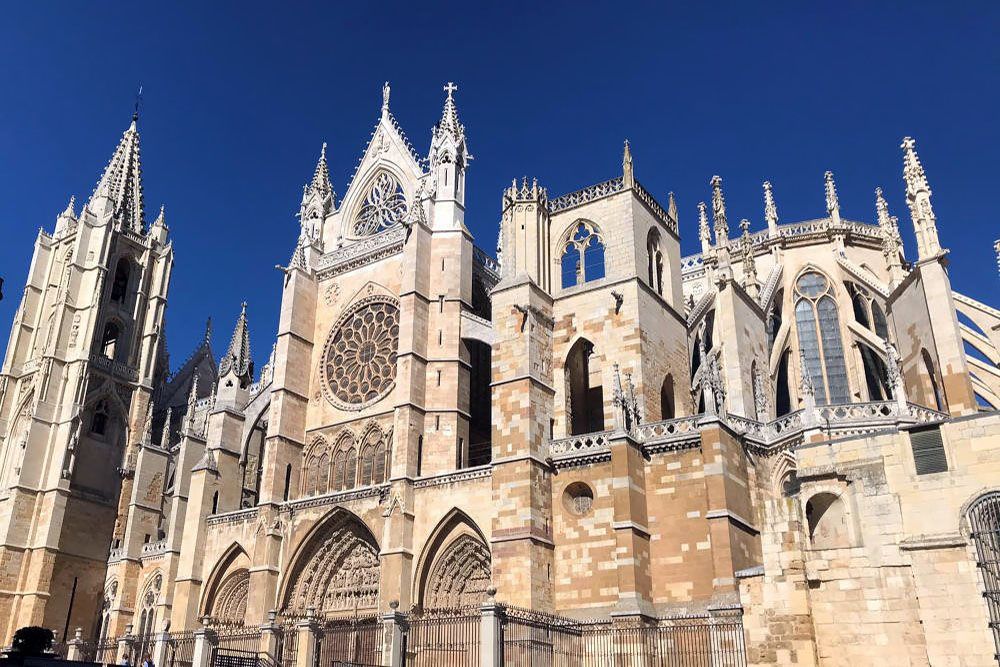
Camino Francés by boat
For many pilgrims, this is a welcome break from the many miles of walking they do. A boat crosses the Canal de Castilla to Frómista. Taking the boat is allowed, as you can even get a stamp on the boat. The boat trip of a few kilometres produces an impressive play of colours. Sunlight colours the autumn-hued trees along the canal. Behind them lie the farmlands. In the past, the canal served to transport grain. Now it is mainly a tourist destination. Slowly, the boat glides through the ripple-free water. Pilgrims walk on the path beside the canal. They wave at us enthusiastically.
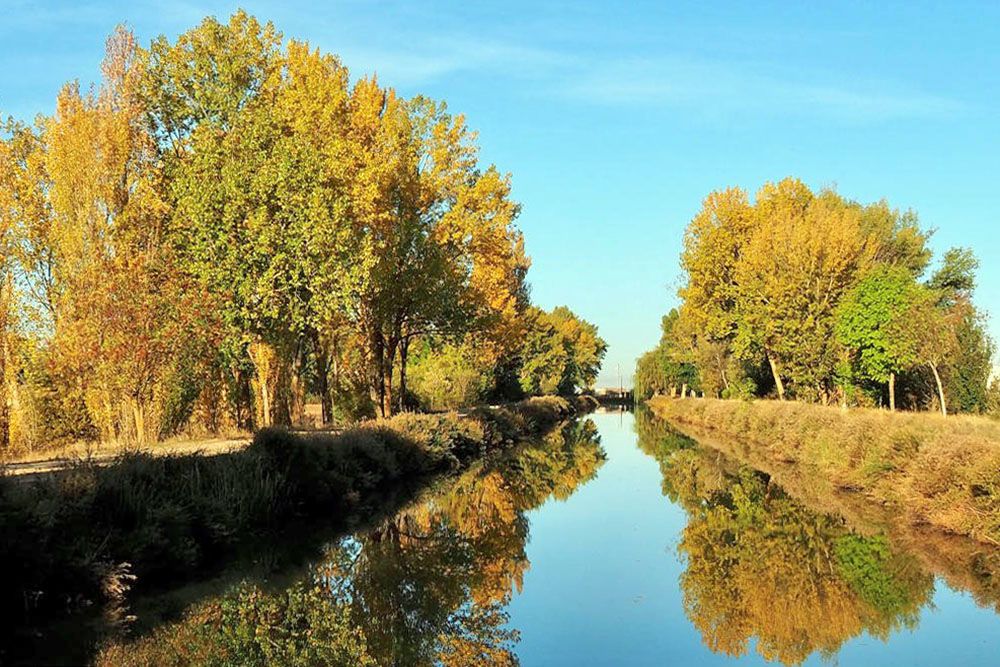
Iglesia de San Martín in Frómista
Not far from the boat terminus, in the centre of Frómista is this extraordinary 11th-century Romanesque church. At the time, the Queen of Castile ordered the construction of a monastery and church. The monastery was demolished after the monks left in the 13th century.
From the outside, the shrine looks austere. Even the interior does not appear opulent at first glance. But the beautiful sculptures and impressive capitals are very special. The capitals depict numerous Biblical stories.
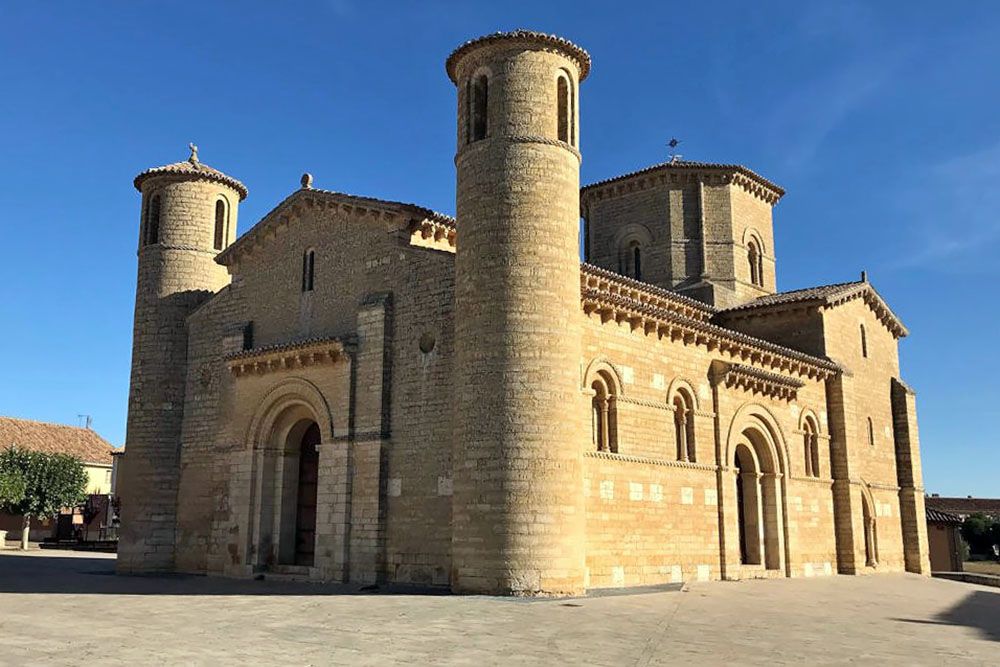
León
The next major city along the pilgrimage route is León. It is the lively and beautiful capital of the province of the same name. With its many attractions, León is really a city to rest from fatigue for at least two days.
The absolute highlight of León is the Cathedral of Santa Maria de Regla. Construction of this Gothic shrine began in 1205. A hundred years later, the church was completed. On the outside, the magnificent Last Judgement stands out above the entrance Puerta de la Virgen Blanca. Inside, the 125 stained-glass windows provide beautiful light.
It is also a cosy city with a historic centre full of beautiful buildings, churches and squares. León is not yet well known to English travellers. But the city has plenty of highlights along the Camino Francés. Hence, we will soon create a separate blog on this fascinating city.
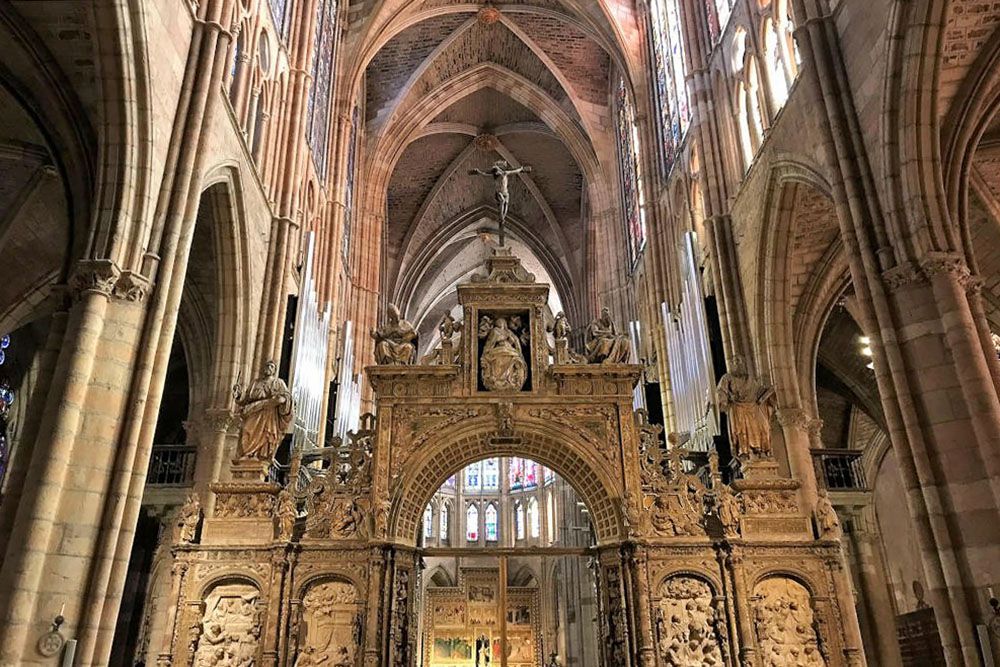
Authentic mountain village O Cebreiro
The final stretch of the Camino Francés passes through the Galicia region. The lovely and small mountain village of O Cebreiro is the first stopover for pilgrims in that region. The village is beautifully situated at about 1,300 metres, sandwiched between mountain ranges. The views of the surroundings there are fantastic.
But O Cebreiro is also special for another reason. You will find traditional mountain dwellings (pallozas) dating back to Celtic times. These unique pallozas are found only in this region. They are round or oval in shape with granite or slate walls and a thatched roof. There is a sleeping area for the parents. Around the fireplace is a living area and a third area is for the livestock. Above the space for livestock, straw was kept and children slept. One of these pallozas is now set up as a small museum.
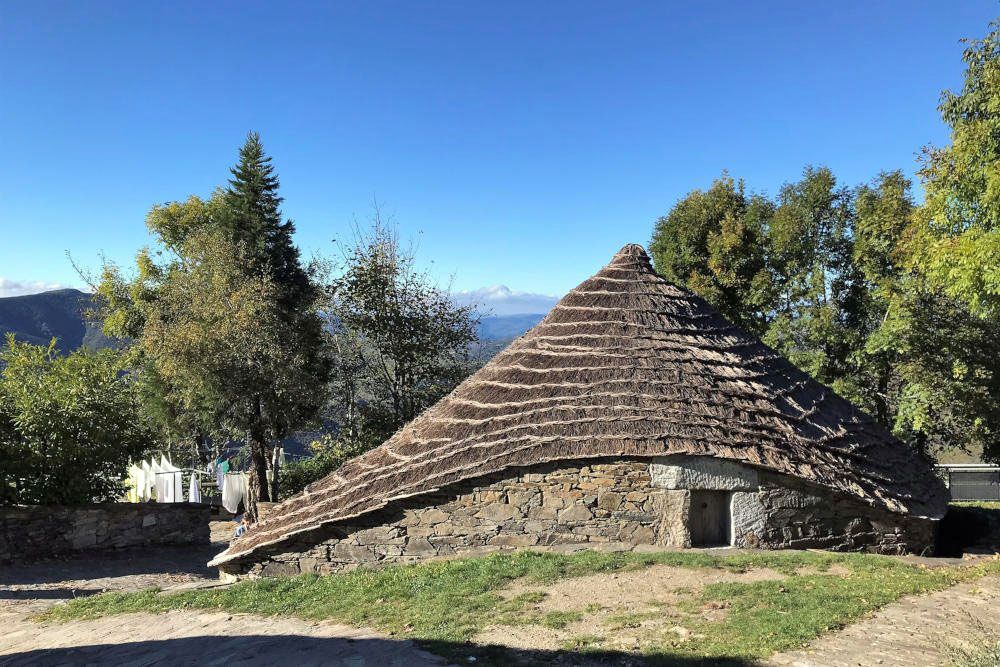
The little church of Santa María de O Cebreiro is another place of interest. It houses a special chalice with blood. According to legend, this was used to convert an unbeliever. He subsequently became a preacher. The statue of Mary with child is also beautiful.
There is a cosy atmosphere in the village. This is why O Cebreiro was definitely one of the highlights along the Camino Francés for us. The many pilgrims enjoy the view and rest from the climbs they have just completed. In the process, they feast on Queixo do Cebreiro. This local soft creamy cheese is still made the traditional way. Topped with some honey, it is a real delicacy.
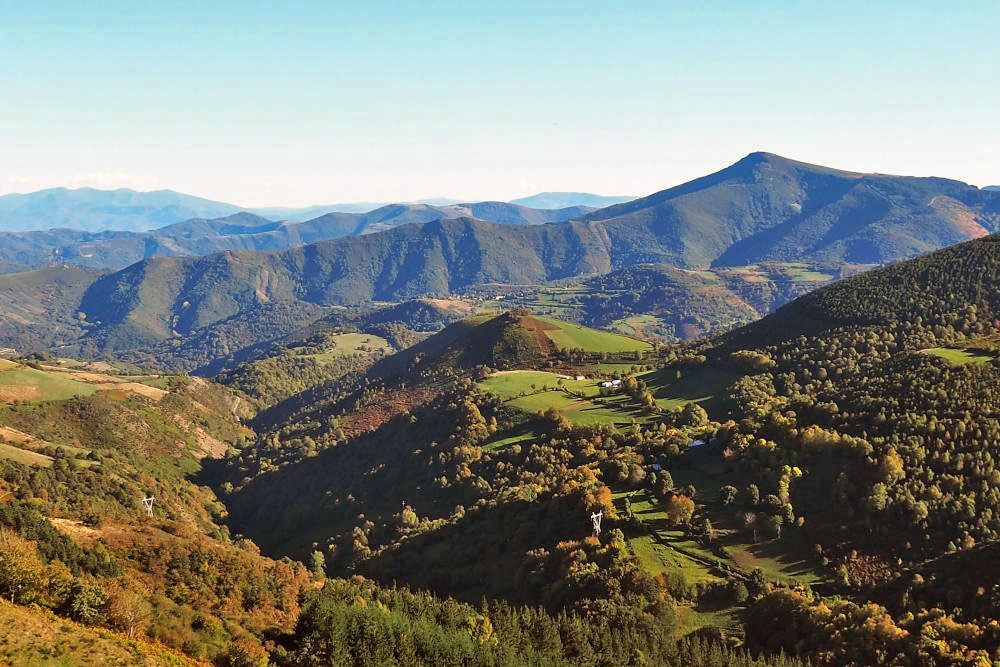
Monastery of Samos
Samos is most reminiscent of the Greek island off the coast of Turkey. However, Galicia is also home to a place with that name, less famous than the tourist island. While it has a special attraction not to be missed. The gigantic monastic complex dedicated to Saint Julian of Samos is impressive and centuries old. The first references date back to the 7th century, when the building underwent renovation. From the 10th century, it has been a Benedictine monastery. Currently, only seven monks still live in the immense structure.
One of the monks leads us around the monastery. From him we learn that in the Middle Ages this was one of the most powerful monasteries in Spain and Portugal, From Samos, the monks controlled more than 100 monasteries in the Iberian Peninsula. The murals in the main cloisters are particularly impressive. In addition, the courtyard of the complex is beautiful.
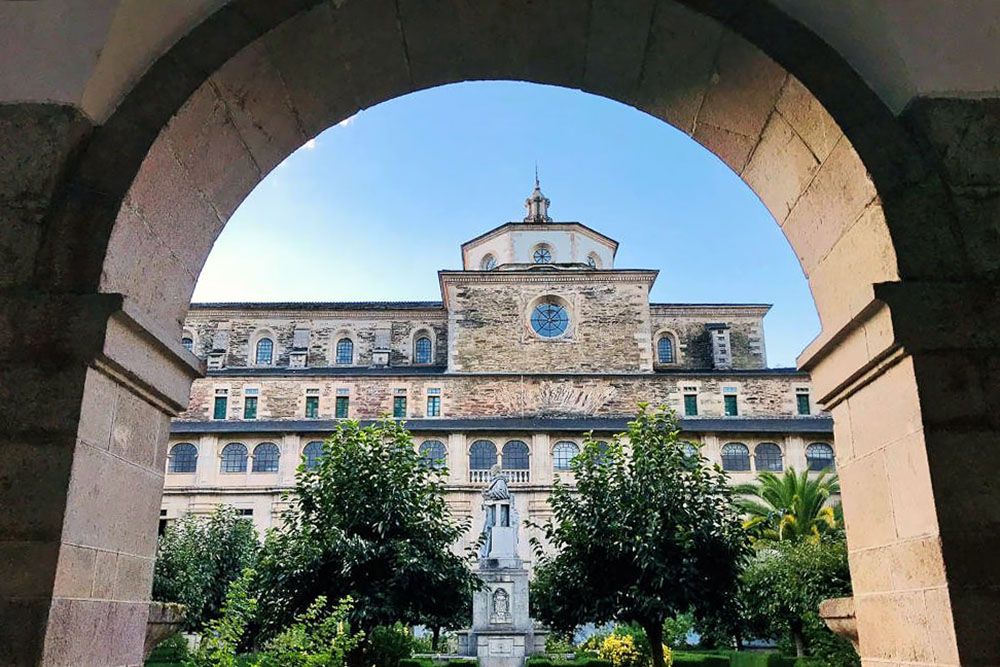
Sarria
The lively market town of Sarria is always full of pilgrims. Not entirely surprisingly, as it is in this town that many start the walk to Santiago de Compostela. They cover over 100 kilometres this way and therefore qualify for the certificate. They arrive in Sarria by train, and then start their pilgrimage.
For stunning views of the city, Mirador de la Carcen is the best spot. It lies on the pilgrims’ route. Sarria itself has several unusual churches and chapels. Be sure to visit the beautiful Convento de la Magdalena. This convent has a beautiful interior.
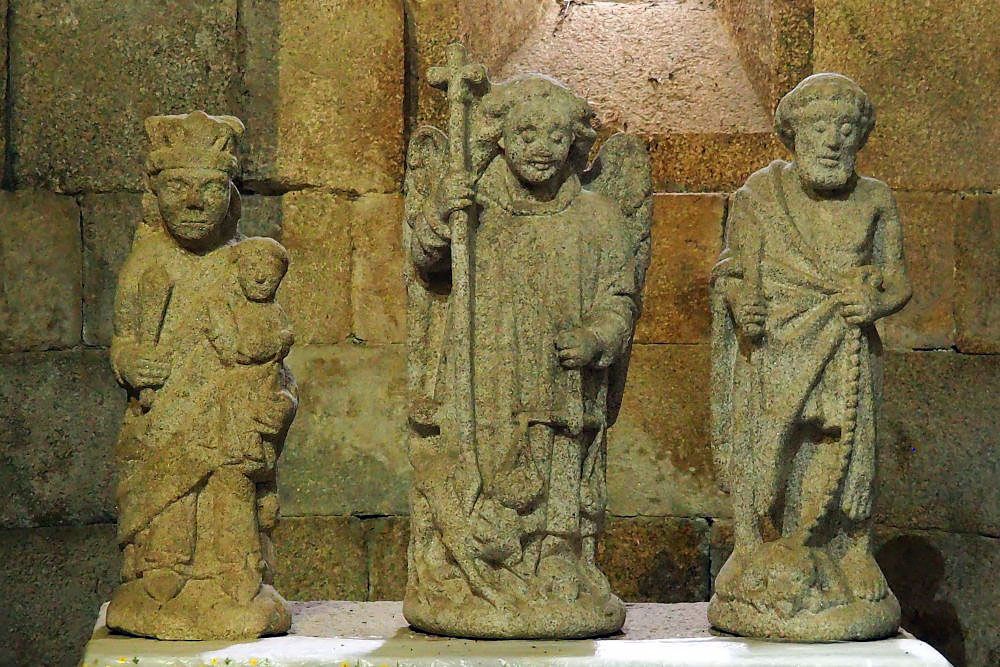
Portomarin
Walking through this town, at first glance there doesn’t seem to be much special to see. But the story of Portomarin certainly is. The medieval town was slowly being swallowed up by the waters of the river and the nearby reservoir. Therefore, they decided to move the town altogether in the 1960s. The historical buildings, such as the church of San Nicolao, were demolished stone by stone and rebuilt identically in the new place. On our visit, the city has little to fear from washing water in the river. Due to the long drought, there is hardly any water in the river. Flooding will not be an issue for the time being.
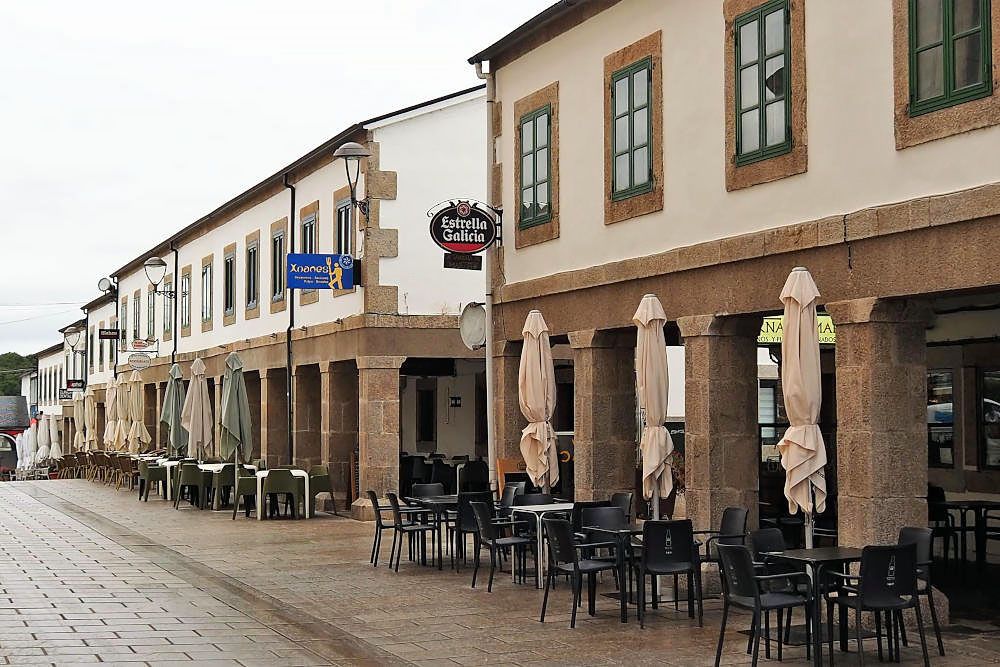
Church of Vilar de Donas
This church is one of the most important Romanesque monuments in Galicia. A former priest over 90 leads us around. With his walking stick, he points to the beautiful medieval paintings. They date from the sacred year 1434. In addition, the church has special tombs. Next to the church are some more unusual stone structures on the farmland. Long ago, these hórreos served to store the harvested grain. This was so well sheltered from the rain and animals.
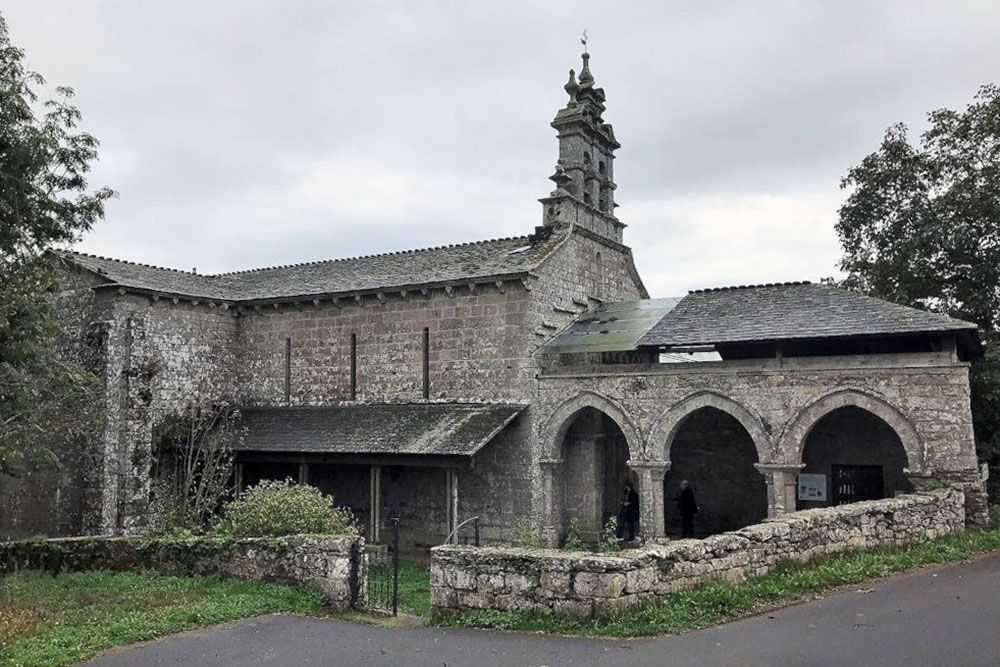
Castle of Pambre
Near the town of Palas de Rei is one of Galicia’s best-preserved medieval castles. That is the castle of Pambre. The castle is located on a hill. It used to be possible to keep a good eye on the enemy from there. Now we look at peacefully grazing cows in the meadows below. The castle has a small exhibition room. But the most fun is a walk around the fortress.
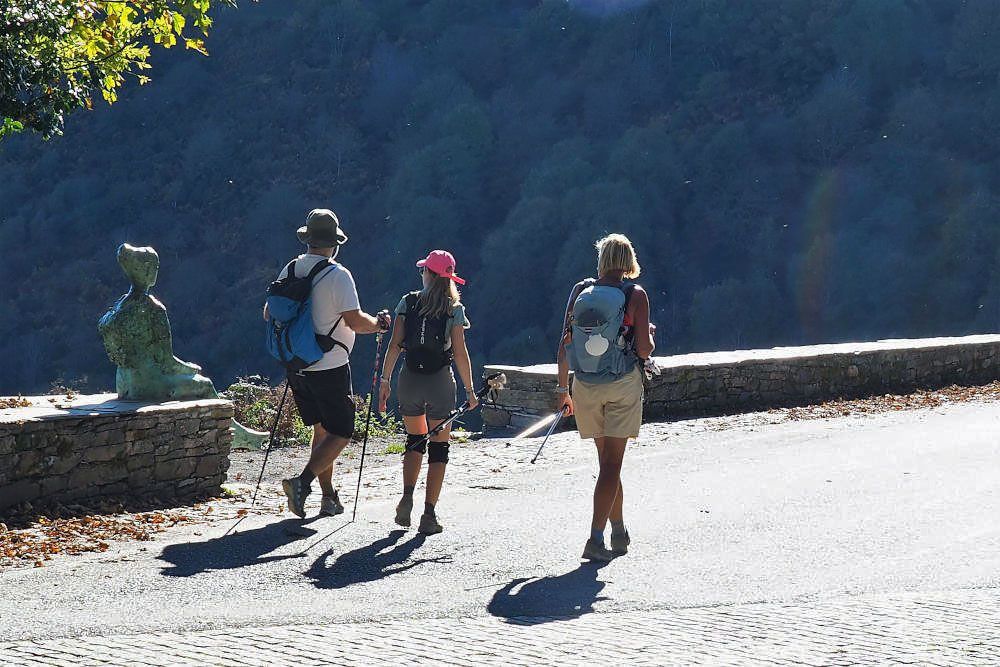
Melide
The town of Melide is a junction of the pilgrim routes. The northern route from Oviedo meets the Camino Francés here. The church of San Pedro is the oldest in Galicia. But the church of Santa Maria is also unique for its many medieval frescoes.
For culinary gourmets, Melide is a place to remember. You will find several pulperias there, serving the local speciality Pulpo alla galega. These are slices of boiled squid tentacles, sprinkled with paprika. We have lunch at Pulperia A Garnacha. This huge restaurant is fully occupied on a weekday afternoon. At every table, people enjoy the squid slices with potato and parsley. The owner tells us that he processes several hundred kilos of squid every day. And every day the entire stock is cleanly used up.
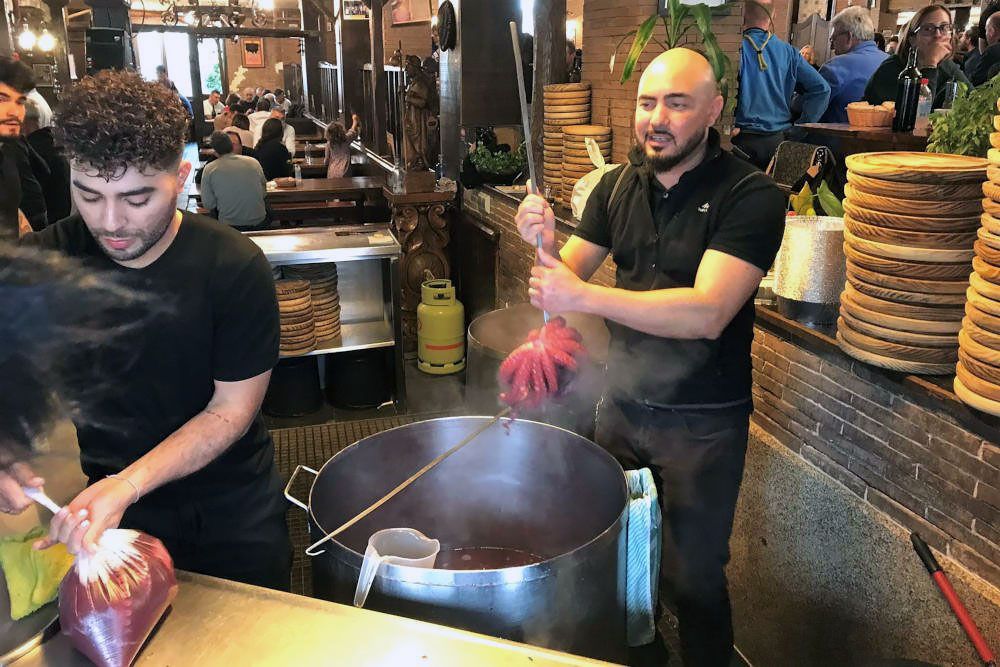
Santiago de Compostela
We get the first glimpse of our final destination at Monte do Gozo. At the top of the mountain is a modern pilgrims’ monument. It is a meeting place for pilgrims. They know that only a few kilometres separate them from the coveted certificate and a visit to this beautiful city.
We are unlucky and lucky on our visit to Santiago. It is windy and raining heavily, which makes this beautiful city just a little less attractive. But we have the privilege of entering the cathedral through the Portico de Gloria. This portico is open only in the Holy Years. Before entering the cathedral, we visit the Plaza do Obradoiro. In this square, in the middle is a memorial with kilometre “0”. That stone marks the official end point of the pilgrims’ routes. Every pilgrim takes a photo there, with the cathedral in the background. Some kneel and kiss the memorial stone. Their mission is accomplished!
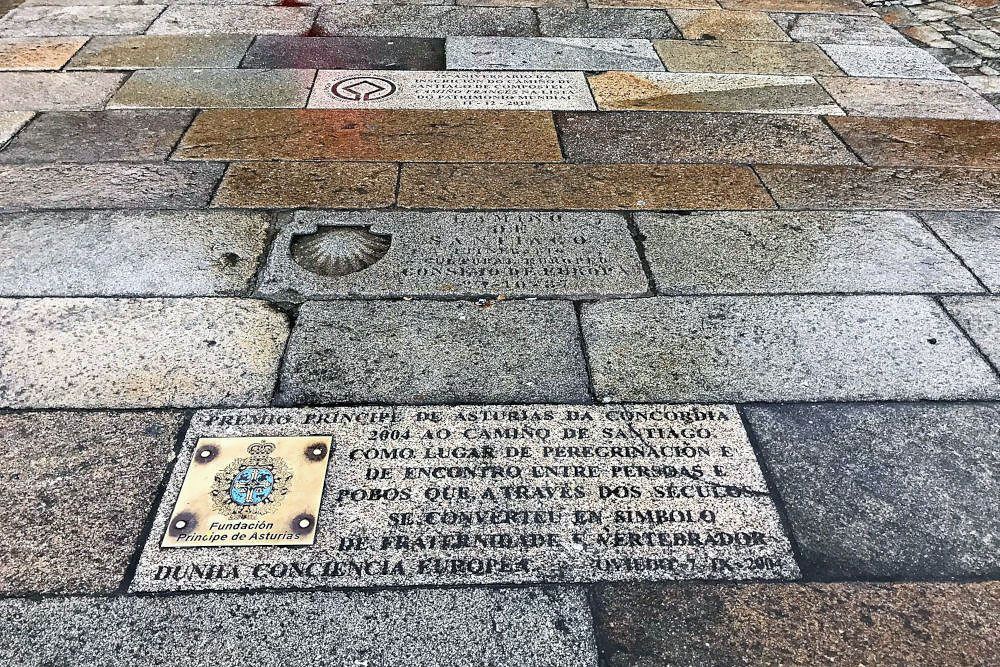
In the cathedral, we witness the mass held daily for the pilgrims. Special to see hundreds of walkers with their wet clothes and colourful ponchos experiencing the service.
Friends for life
At the International Pilgrim’s Reception Office, pilgrims collect their certificates. There, they often bid a moving farewell to other pilgrims. Many set off alone on their way along the highlights of the Camino Francés. But along the way they have made friendships for life with other walkers from all corners of the world. For instance, we know one pilgrim who even married a fellow walker she met on the Camino de Santiago. Addresses are exchanged, plans are made to meet again. The Camino Francés connects people from all parts of the world, regardless of religion and origin!
We continue to enjoy the many wonderful sights of Santiago de Compostela. We will describe those in a separate blog soon. Because this pilgrim city has so much beauty to offer, you’ll definitely want to stay there for a few days.
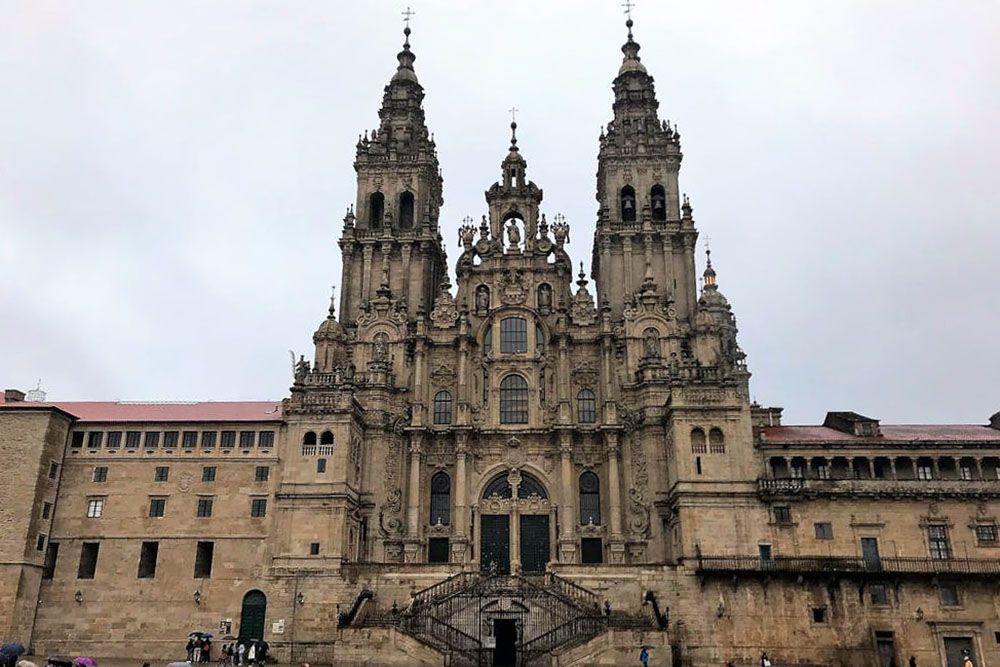
At the invitation of the Spanish Tourist Board, we visited the sights along the Camino Francés. We compiled the content of the blog independently and objectively based on our own impressions.
This is what you want to know about the sights along the Camino Francés
The total route is almost 800 kilometres long if you start at the Somport Pass.
There are two starting points of the Camino Francés. You can start, as we describe in this blog, at the Somport Pass in northern Spain. The Somport Pass is near the border with France. Another option is to start at St Jean Pied de Port. This starting point is in France. Pilgrims starting there on the Camino Francés face a tough stretch right away: they have to cross the Pyrenees. Both routes meet in Puente de Reina and then jointly continue the way to Santiago de Compostela.
Officially, the route is split into over 30 stages. But you can of course choose to walk more or fewer kilometres in a day. This way, you can adjust the number of stages to your own walking pace.
Yes, the route is clearly marked with a yellow shell on a blue background. The markings are so numerous and large that going wrong is actually impossible. And should that happen: any Spaniard you speak to will immediately point you in the right direction.
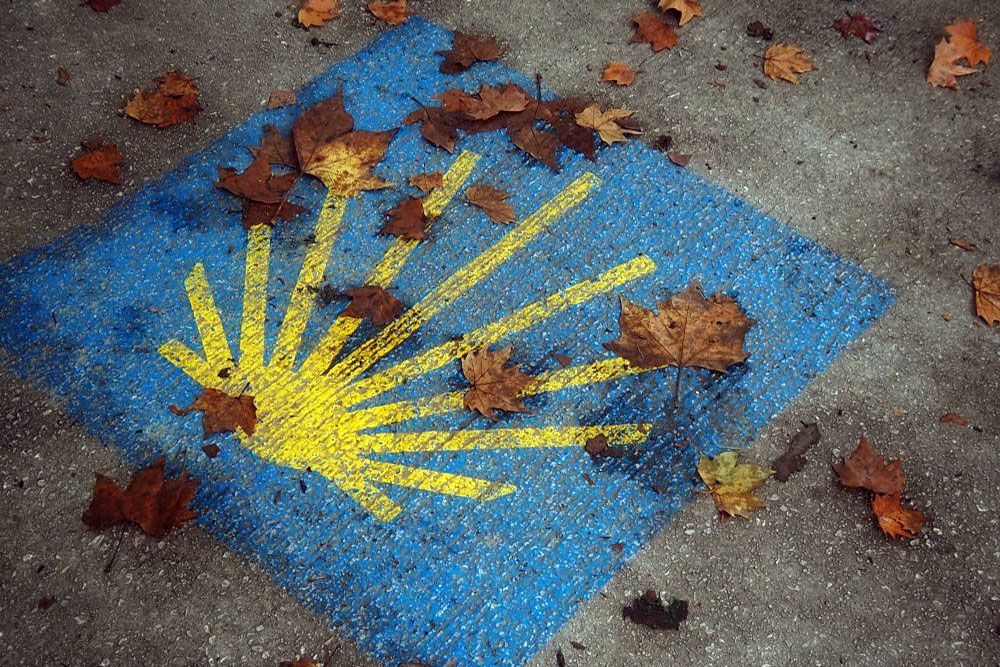
These are too many to mention. But definitely take your time to enjoy all the highlights along the way. We were very impressed by the monastery of San Juan de la Peña and the Gregorian chanting in the monastery in Leyre. But also the church of Santa Maria de Eunate, and the atmosphere and friendliness of the cities of Jaca, Pamplona, Logroño and Burgos. And, of course, the impressive cathedrals in Pamplona and Burgos, in particular. So, be sure to spend a few days touring the various places while walking the Camino Francés.
Spring and autumn in particular are ideal for walking the route. In July and August, it can be very hot along the way. Moreover, in August, many Spanish pilgrims are on the road. In winter, snow and cold can make the trek difficult.
It is estimated that around 300,000 pilgrims walk the Camino Francés every year. That number rises further in Holy Years to around 600,000 walkers (for an explanation of Holy Years: see the next question). Those seem immense numbers where you immediately think of walking the Four Days Marches. Realise, though, that the route is almost 800 kilometres long. Not everyone starts at the same time, so it does spread out well.
From Sarria, about 100 kilometres before Santiago de Compostela, it gets busier. This is because many walkers start the journey in this town. They then cover the minimum distance to qualify for the certificate of having completed the Camino.
When 25 July falls on a Sunday, it is called Año Xacobeo, or a Holy Year. This is when people commemorate the martyrdom of Jacob. This occurs 14 times in a century, according to a fixed schedule of 6-5-6-11 years. The last Holy Year was officially in 2021. That fell in the middle of Covid times. Therefore, the year was extended and 2022 was also a Holy Year. During a Holy Year, there are numerous festivities in the towns and villages along the Santiago roads. In Santiago de Compostela, pilgrims can enter the Cathedral through the Puerta Santa (holy door) during Holy Year. The next Holy Year will be in 2027.
Yes, more and more commercial companies are offering this option. Each party has its own conditions and rates. Be sure to check the internet for luggage transport providers.
Most pilgrims spend the night in so-called albergues. In big cities, these are large accommodations with up to 150 beds. In small villages, they are often small shelters with just 10 beds.
The number of donative albergues is gradually decreasing. Here, you decide what you give for shelter. The rule of thumb is that you give a minimum of €5. The municipal albergues are managed by the municipality. Accommodation here is slightly more expensive, but still cheap. There are fixed rates for an overnight stay in a municipal albergue. Most have dormitories, but it is often also possible to book private rooms. Finally, there are more and more private albergues. These have more luxury. They also often offer extra services. The prices of a private albergue are again a bit higher.
But of course, you can also opt for a commercial hotel, equipped with all the conveniences and complete privacy. That does make walking the St Jacob's Way a lot more expensive.

